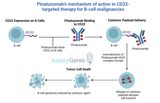Melanoma: Understanding, Diagnosing, and Treating Skin Cancer
1. What is Melanoma?
Melanoma is a malignant tumor that arises from melanocytes, often appearing as an unusual mole or dark spot on the skin. It can occur anywhere on the body but is most commonly found on areas exposed to sunlight, such as the face, neck, and limbs.
Types of Melanoma
There are several types of melanoma, including:
- Superficial Spreading Melanoma: The most common type, usually starts as a flat or slightly raised discolored patch.
- Nodular Melanoma: Appears as a raised bump and is more aggressive.
- Lentigo Maligna Melanoma: Often affects older adults and appears as a large, flat brown patch on sun-exposed areas.
- Acral Lentiginous Melanoma: More common in people with darker skin and appears on palms, soles, or under nails.
2. Risk Factors for Melanoma
Melanoma has several risk factors, with UV exposure being a primary one. Other risk factors include:
- UV Radiation: Excessive exposure to UV rays from sunlight or tanning beds increases melanoma risk.
- Fair Skin and Light Hair: Individuals with fair skin, red or blond hair, and light-colored eyes are more susceptible.
- Family History: A family history of melanoma increases risk due to genetic predisposition.
- Mole Count: Having a high number of moles or atypical moles can increase risk.
- Weakened Immune System: Those with compromised immune systems, such as transplant patients, are at higher risk.
3. Early Detection and Diagnosis
The ABCDEs of Melanoma
Early detection is critical for successful treatment. The ABCDE rule helps in identifying suspicious moles:
- A - Asymmetry: If one half of the mole doesn't match the other.
- B - Border: Look for irregular, scalloped, or poorly defined borders.
- C - Color: Varying shades of brown, black, or tan could be concerning.
- D - Diameter: A mole larger than 6mm in diameter (about the size of a pencil eraser).
- E - Evolving: Any change in size, shape, or color over time.
Diagnostic Methods
If melanoma is suspected, a dermatologist may recommend:
- Biopsy: Removal of a sample of tissue for laboratory analysis.
- Dermoscopy: A non-invasive imaging technique that uses a magnifying lens and light source to examine skin lesions.
- Imaging Tests: In advanced stages, imaging tests such as MRI or CT scans may help assess
the extent of spread.
4. Stages of Melanoma
Melanoma stages are classified based on tumor thickness, spread, and lymph node involvement:
- Stage 0 (In situ): Confined to the outer layer of skin.
- Stage I and II: Localized to the skin, with varying thickness and ulceration.
- Stage III: Spread to nearby lymph nodes but not to distant organs.
- Stage IV: Metastatic, with cancer cells spread to distant organs such as the lungs or liver.
5. Treatment Options for Melanoma
Surgery
- Wide Excision: Removal of the melanoma along with a margin of normal skin to prevent recurrence.
- Lymph Node Dissection: If melanoma has spread to lymph nodes, they may be surgically removed.
Immunotherapy
- Checkpoint Inhibitors: Drugs like pembrolizumab and nivolumab block proteins that prevent the immune system from attacking cancer cells, enhancing immune response.
- Interleukin-2: Stimulates the immune system to target and destroy melanoma cells.
Targeted Therapy
- BRAF and MEK Inhibitors: Target specific genetic mutations (e.g., BRAF mutation) found in some melanoma cells. Drugs such as vemurafenib and dabrafenib are commonly used.
Radiation Therapy
- May be used to treat advanced melanoma or melanoma that has spread to other parts of the body.
Chemotherapy
- Dacarbazine and temozolomide are used, although they are less common in melanoma due to the effectiveness of immunotherapy and targeted therapies.
6. Prevention and Risk Reduction
Sun Protection
- Use Sunscreen: Apply broad-spectrum sunscreen with SPF 30 or higher, reapplying every two
hours. - Wear Protective Clothing: Long sleeves, wide-brimmed hats, and sunglasses provide additional protection.
- Avoid Tanning Beds: Artificial tanning devices emit UV radiation that can increase melanoma
risk.
Regular Skin Checks
- Self-Examination: Regularly check your skin for any new or changing moles.
- Dermatologist Visits: Annual skin exams are recommended, especially for individuals at high
risk.
7. Advances in Melanoma Research
CAR T-Cell Therapy
CAR T-cell therapy, a novel immunotherapy, is being explored to modify T cells to target melanoma cells specifically, holding promise for more effective treatment options in advanced melanoma.
Personalized Medicine
Genetic profiling of tumors allows for the design of personalized treatment plans based on individual mutations, potentially improving treatment response and reducing side effects.
Conclusion
Melanoma is a serious form of skin cancer, but early detection and advances in treatment have improved outcomes. Understanding risk factors, recognizing early signs, and taking preventive measures are essential steps in reducing the risk and impact of melanoma. With ongoing research into immunotherapies and personalized treatment approaches, the future holds promise for more targeted and effective treatments for melanoma.
Recent Posts
-
Tigatuzumab Biosimilar: Harnessing DR5 for Targeted Cancer Therapy
Tigatuzumab is a monoclonal antibody targeting death receptor 5 (DR5), a member of the …17th Dec 2025 -
Alemtuzumab: Mechanism, Applications, and Biosimilar Advancements
Alemtuzumab is a monoclonal antibody targeting CD52, a glycoprotein highly expressed on …13th Jan 2025 -
Pinatuzumab: Advancing Cancer Research and Therapeutics
Pinatuzumab vedotin is an antibody-drug conjugate (ADC) targeting CD22, a cell surface …13th Jan 2025




